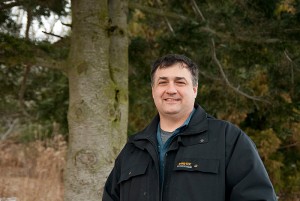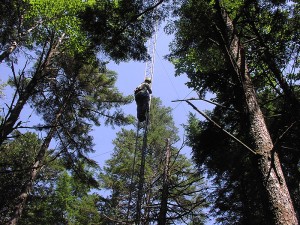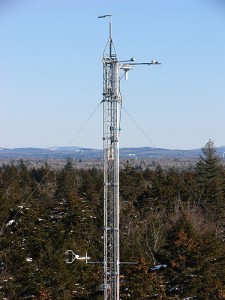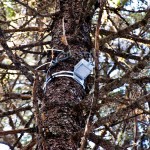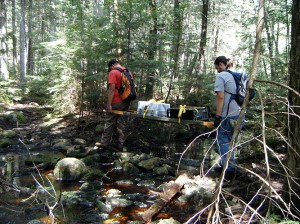 UConn Health Center
UConn Health Center
Center for Indoor Environments and Health
Recovery from Catastrophic Weather: Hurricane Sandy Study
Principal Investigator, Paula Schenck, MPH, schenck@uchc.edu
Many responded to the devastation of Hurricane Sandy: union and non -union construction, trade and maintenance/public works employees; public health and environmental professionals; emergency response including medical personnel; volunteers – student, faith-based and/or community organizations; and family members and friends of property owners. Exposure to molds and associated bioaerosols is a risk factor for respiratory illness. Although technical guidance and training materials on mold exposure and mitigation are readily available, workers are at risk as recovery from Sandy ensues. Further complexity arises because knowledge about health effects from mold exposure (and appropriate protection) is incomplete, and misinformation and controversy in public media leads to confusion.
In the fall 2013, the Center for Indoor Environments and Health began work on – Recovery from catastrophic weather: mold exposure and health-related training (funded under the Centers for Disease Control and Prevention’s National Institute for Occupational Safety and Health (NIOSH) Hurricane Sandy Cooperative Agreement 1U01OH010627-01. This description is solely the responsibility of the authors and does not necessarily represent the official views of NIOSH)– The project is designed to increase knowledge and protective behavior related to mold mitigation and health effects within emergency and recovery respondents in states affected by Hurricane Sandy. The project team will engage response and recovery workers and the volunteer community to identify barriers to a) becoming knowledgeable and b) acting appropriately to reduce the risk from mold exposure activities. The team will develop and offer online publication (including links to vetted resources) and a series of seminar trainings. To better prepare emergency response personnel to address respiratory illness and mold exposure, and to provide guidance to primary care clinicians to address patients presenting with illnesses that relate to exposures during hurricane response and recovery activities, a new course segment offering Continuing Medical Education will be incorporated into the UConn Center for Indoor Environments and Health on-line Clinicians Mold Course [www.video.uchc.edu/MoldMoisture/]. Utilizing partnerships and relationships with state health and emergency response agencies, healthy homes programs, union health and safety groups, faithbased and community organizations, the project plans to initially implement the program in Connecticut (CT). The network will be broadened to contacts throughout the states impacted by Hurricane Sandy to offer the materials on overcoming the barriers to using methods and personal protective equipment to mitigate mold exposure for disaster preparedness programs throughout the country.
Recovery from catastrophic weather brings threats and opportunities to public health. Mold exposure and related respiratory illness are unintended consequences to unprepared response and recovery personnel. With greater knowledge about mold’s relationship to health and with better skills in addressing flood-damaged properties, the well-prepared workforce will have increased capacity to protect worker and volunteer populations against illness and to rebuild environments for healthier, more resilient communities able to withstand the next hurricane.
PDFs Available:
Project Description: Hurricane Sandy Project Description
Information Participating in Focus Groups: Focus Group Information Sheet
Focus Group Recruitment: Focus Group Recruitment Sheet
